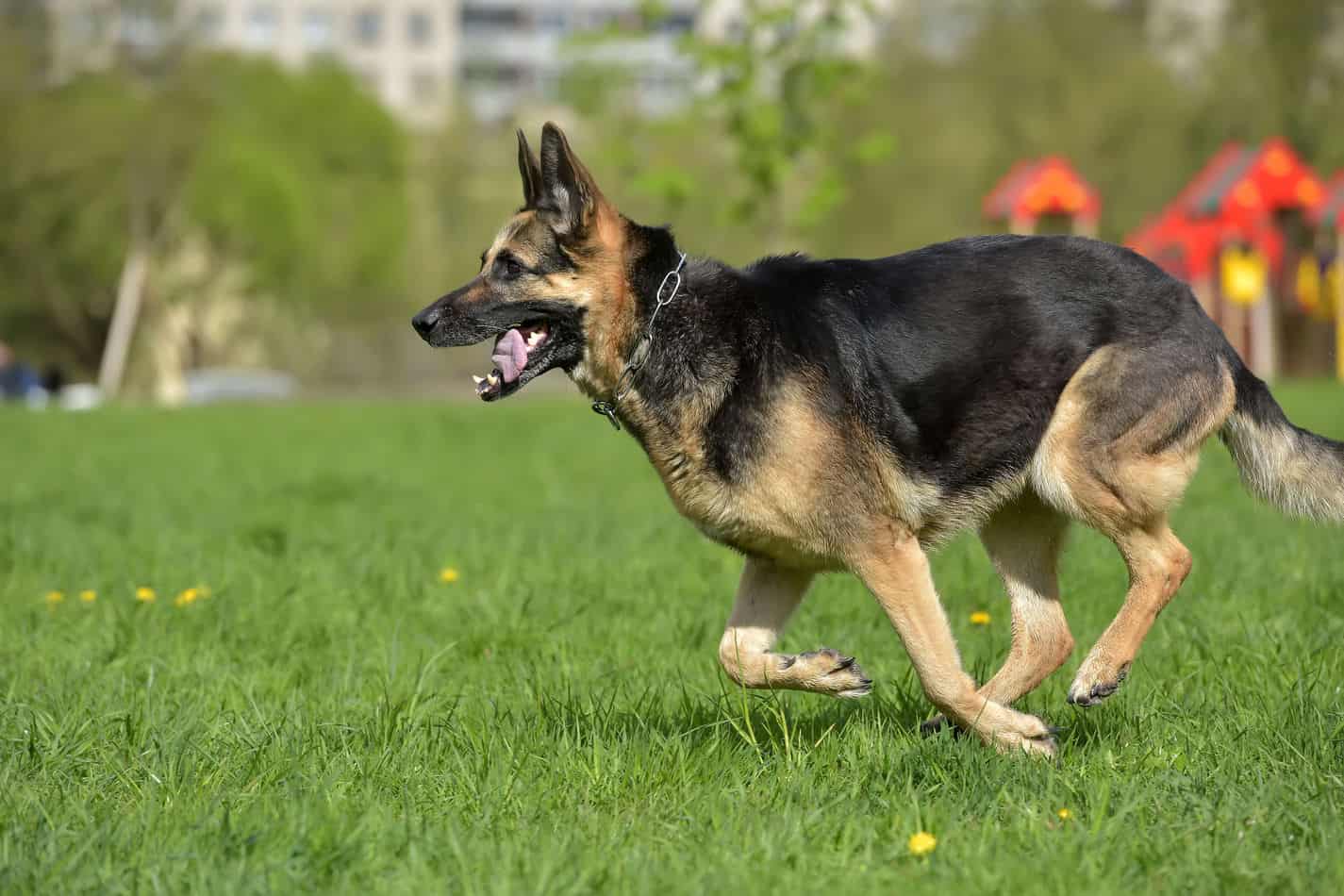
German Shepherd is a breed from Germany; it is part of the herding group because they were developed to watch over and herd sheep. That is why it is also known as a sheepdog.
Thanks to their intelligence, obedience, and training capacity, they are used for other jobs. You can find police dogs, guide dogs for the blind, guard dogs, and rescue dogs. You can also find them in the army and the police.
They are easy to train dogs due to their intelligence; they are very active breeds and need daily exercise. The German Shepherd has a maximum height of 25 inches, and its weight is approximately 95 pounds or 41 kilograms.
The head of this dog is wide, and it is narrower at the muzzle, and it is more tapered. Their fur is rough and thick; it can be black, tan, or gray. The coat is generally of medium length and should be rough.
Its ears are large and erect, it has a muscular and level back, while its tail is bushy and curved slightly downward. This breed usually lives between 10 and 12 years, and they have a personality that gets along well with other pets and with children.
You should keep in mind that they maintain their guardian instincts, and that is why they are always on the lookout for all strangers.
What Age of A German Shepherd Start Running?
Contents
If you have a German Shepherd and want to start taking him for a run, you should know that experts recommend that you wait until he is 12 months old. It is because, at that age, German Shepherds have completed bone growth.
When he reaches this age, you can take him to gradually start his run, as long as your dog is comfortable.
If you have a German Shepherd and is under 12 years old, you can take him to a park, and you can also walk him 1 or 2 times a day. Remember that you should not exercise it too much because it can affect it seriously.
How Fast Can A German Shepherd Run?
These dogs can run between 30 and 32 miles per hour. That is why they are on the list of the fastest dogs. They are highly competitive and motivated dogs, have good speed and exceptional stamina.
Although this breed is fast and is on the list of the fastest, they are not dogs that were meant to be good runners, this dog is a working dog and is more efficient at trotting. As mentioned earlier, these dogs set the perimeter for the sheep when there were no fences.
Factors About The Running Speed Of A German Shepherd
Factors that can affect your dog’s speed are as follows:
-
The health of your German Shepherd
If your dog is healthy, he can run and reach a good speed, whereas a sick dog will not be able to do it. One factor that can affect the health of a German Shepherd is the diet or food he is fed.
This type of dog needs a diet rich in protein to have strong eggs and muscles.
-
The level of training
If you want your dog to reach a good speed, you must train him very well. By keeping it active, you can be sure that your German Shepherd will have the strength, endurance, and speed you want to run long distances.
-
The age of your German Shepherd
Another factor that affects your dog’s speed is age. If you have a puppy or old German Shepherd, you will not be able to run long distances. Well-fed, mature German Shepherds will be able to run long distances at a fast speed.
What Are Some Exercises and Training That Improve The Running Speed Of The German Shepherd?
If you want to start training your dog to improve speed, the first thing to do is know when to start. This breed is young and may take longer to grow, so you should wait until a year or a half before running.
This is necessary because your body needs to grow, and if you start early, your German Shepherd may break bones or have a muscle injury.
Another point to keep in mind is that your dog should have proper training before he starts running. It should begin with basic obedience training, knowing how to sit and stop. In this way, you can reduce the possibility of your dog getting hurt.
Start slow
German Shepherds have quite a bit of energy and can last up to 2 hours exercising should you go slowly. If you want your dog to be able to run long distances, you need to start slowly. The first thing to do is let your dog enjoy the outdoors and walk.
A loose leash should be attached so that it is close and does not get lost. Then start the workout by starting jogging, you do this by doing a variation of running and walking. You can also walk for 2 minutes and then run for another minute.
Do this type of training for about 20 minutes in the first few weeks, and your German Shepherd will get used to it. You can reduce the amount of time you walk until the dog is already running the entire time.
During the training of your German Shepherd, you should have a more constant pace and can give him specific commands.
Increase the distance
When your dog is used to running, you can increase the distance. The tips you can follow to achieve this are as follows:
- You should plan every two days a routine between 2 and 3 miles for your German Shepherd to run. This can be done three times a week, and you should always have a loose leash and remember to give your dog commands.
- After a week, you can add one more mile, which is 10 minutes. Remember to keep an eye on your dog’s behavior so that you notice if he gets tired; if so, you should stop until your dog does the mile gradually.
- Slowly, you should increase more distances, but always taking care of your dog’s health. You should not push your dog further than you can to avoid forcing it.
You must be patient and take breaks.
When you start training your dog, you should not push him, be very patient; this is a process that takes time. Always take breaks, and there is enough water for you and your dog to drink.
You can bring snacks for both you and your dog to eat something, depending on how far your dog will go. You must keep up with speed between you and your dog.
You must warm and cool your dog.
You should always give your dog time to warm up before starting any training. This way, you will prevent your dog from getting hurt; it is the same as human training.
Let your dog walk for a few minutes at a slow pace so his muscles will not tense. After finishing the exercise, you should also do it.



